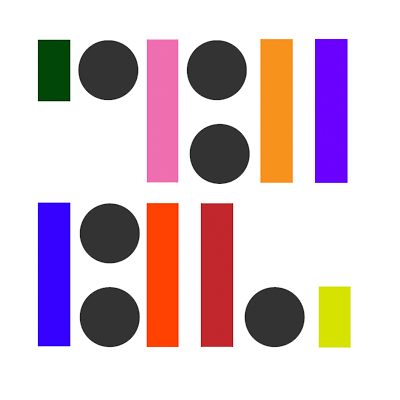Little Martians World
This summer Brazilian artist, Vanessa Rosa, joins us to teach as part of the four-week intensive Interactive Berlin program. She’ll be lecturing on the use of creative AI with Eden Art and on her impressive practice of sculpture and storytelling and the worlds she creates with these tools!
Hi Vanessa. Can you say a little about your background, when did you first recognise that you are an artist?
I fell in love with painting when I was a kid. My grandmother and my mom loved painting, and I enjoyed spending my spare time drawing and creating worlds with my sister. So it was from the beginning a very collaborative practice, but also an act of personal liberation.
When I decided to turn this love into a career, I forced myself to have discipline, to constantly organize my work in print and digital portfolio, to explore as many creative fields as I could find. I would go to illustrators meetups, contemporary art shows, I dived into the street art scene, eventually I found creative technology collectives, each one of these groups contributed to my skills and understanding of what living as an artist meant.
How has being an artist from Brazil and the cultural context of your upbringing influenced your work?
Rio de Janeiro is the city of beauty and chaos. The streets are lively and street art blossomed as a movement during my teen years. It was very grassroots when I started, the low income neighborhoods were the places to find the most innovative painters. I’d spend the weekend painting in favelas, then I started working with NGOs, I learned how to pitch and direct projects for institutions, and how to coordinate teams for large scale murals. It was exciting, but also painful. Drug wars and mafia were part of everyday life.
Rio taught me the need to expand the eurecentered narrative. The history I could read in books did not match the diversity of what surrounded me.
Narrative and story are a big part of the worlds you create with your art, have you always had a big imagination? What drives your desire to invent new story worlds?
That’s also something I developed with my family. My sister and I dreamed about creating comic books when we grew up. My mother became a writer by creating educational content for her students. I started illustrating my mother’s books when I was 10 years old.
In 2010 my parents created a publishing company and I had to learn to create book covers. Then in 2013 when they decided to publish children’s books I learned how to do fully illustrated books. Since then, I’ve been involved in the creation and editing of many dozens of books.
But creating stories is an everyday activity. I look or read something and a story comes to my mind. It’s a way of transforming reality, of seeing beyond the moment, what things could become, what they might have been in the past. It’s a way of being in love with life.
How have the tools you’ve used to create art evolved over time? What motivates your exploration of new tools and techniques?
Learning new tools is so much fun. It changes what we are capable of expressing. First I loved watercolors, then oil, acrylics, spray paint, then I discovered laser cutting and started to design stencils, play with lights and shadows, projection mapping over murals, then sculptures and 3d scanning, 3d animation, now so many new AI techniques to constantly discover! The work has evolved from making a beautiful image to building worlds. I can merge any technique I desire, as long as the outcome has a consistent narrative.
In your work, you give lots of workshops. What kind of knowledge sharing gives you the most satisfaction?
Talking about the process with people who really want to understand it, that’s an enormous pleasure. To share the skills, geek out on techniques, their powers and limitations, a classroom is the perfect place for that. The best is when the students surprise me.
What advice do you have for artists just beginning to explore AI?
Go deep. Follow the research. Discover twitter accounts that share machine learning papers, follow the open source developers who are releasing new code implementations. Read the classics, either speculative science or hard sci-fi.
Look for art projects that inspire you, research their context, where did they come from, where did they learn, what are their inspirations. Connect whatever you are learning with your particular background. Think about your own context and what is meaningful to be done in your surroundings.
Is there anything else you would like to add?
Despite all the fear and hype, I think we’re living in an extremely exciting era to be an artist/creative. If one is willing to constantly learn new tools, there are many low hanging fruits to explore. I never thought I’d be able to make animations because they have always been extremely labor intensive, I would not be able to do them by myself. But now it’s much more accessible. AI doesn’t give you all the answers but it surely helps to expand your mind. Try to integrate AI in the process, even if only to give you feedback.
****
To learn more about Vanessa’s work, and her Little Martians world, visit:
https://www.littlemartians.world/
For more information about Interactive Berlin, which begins 1. July at School of Machines, click here.






